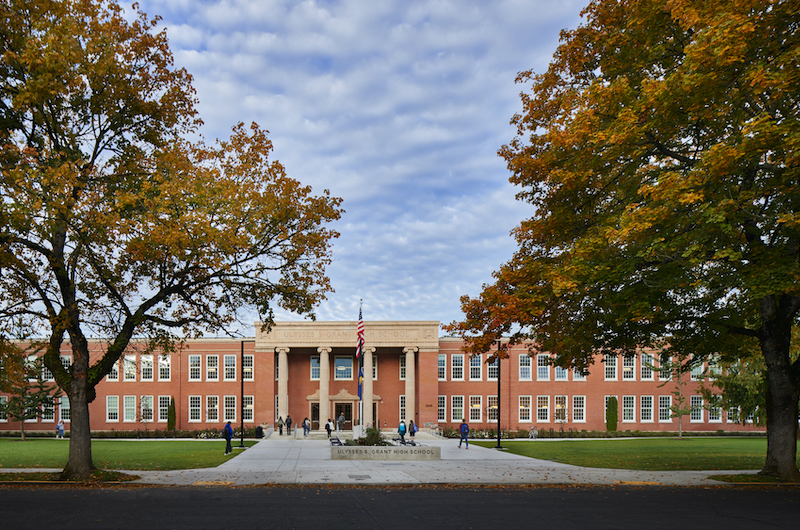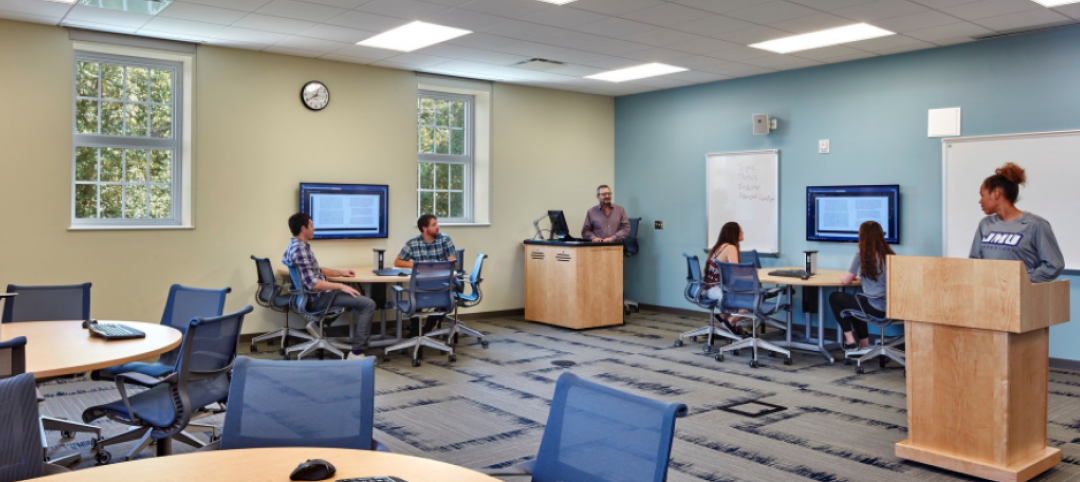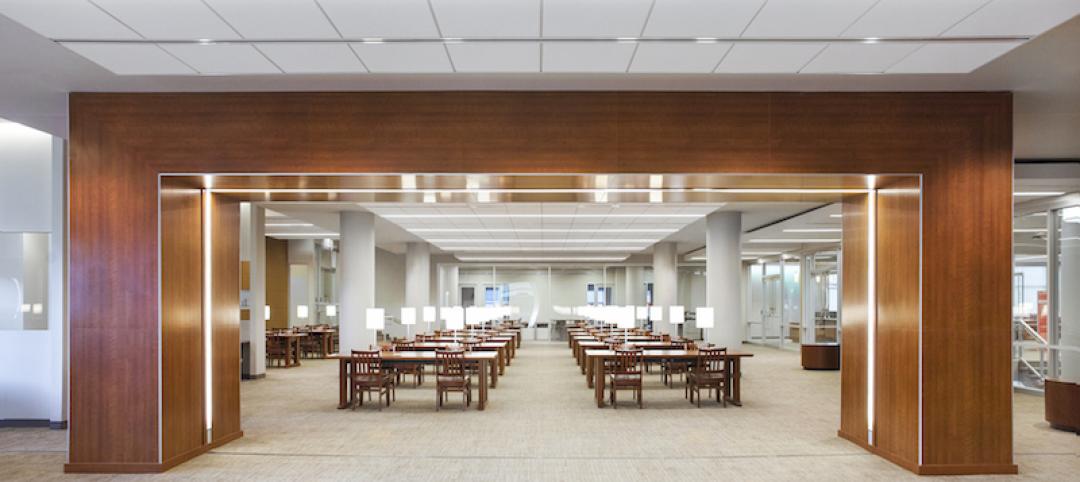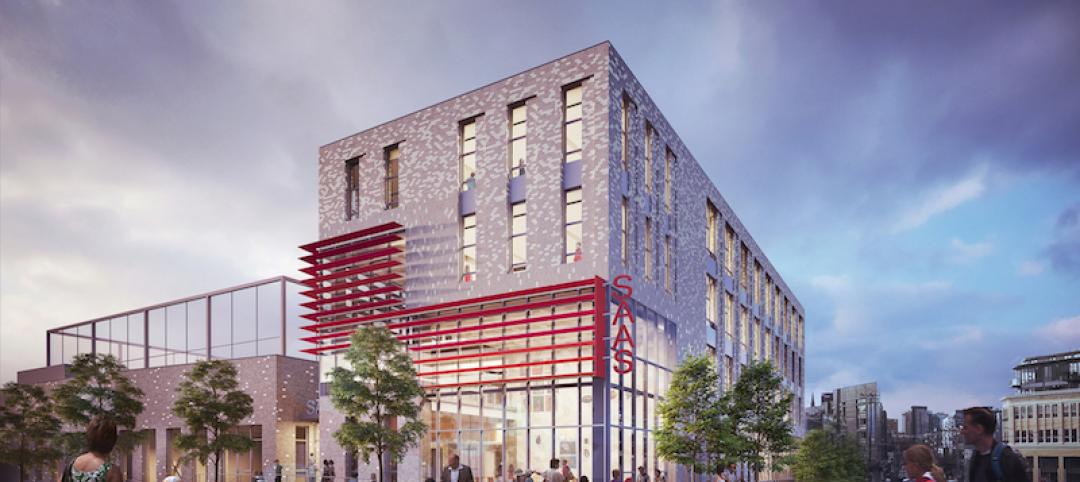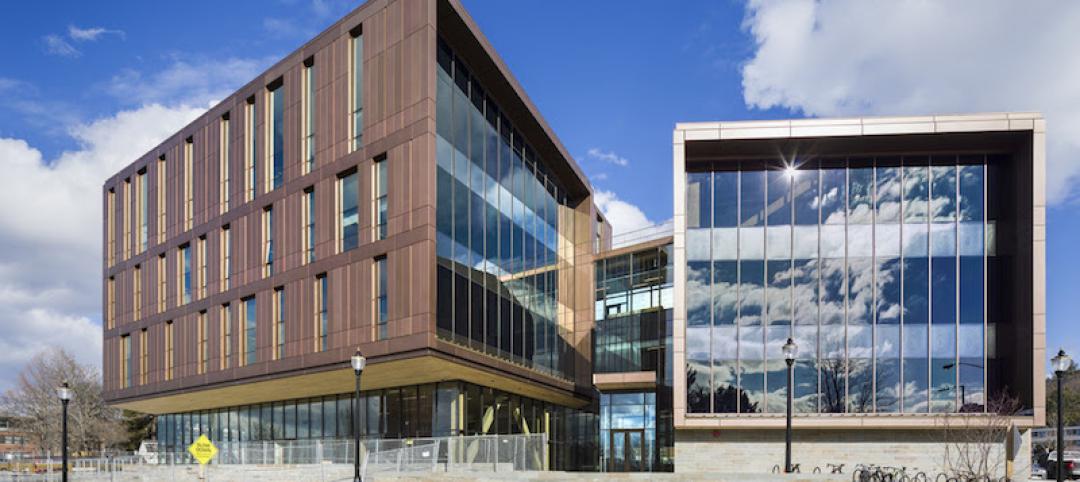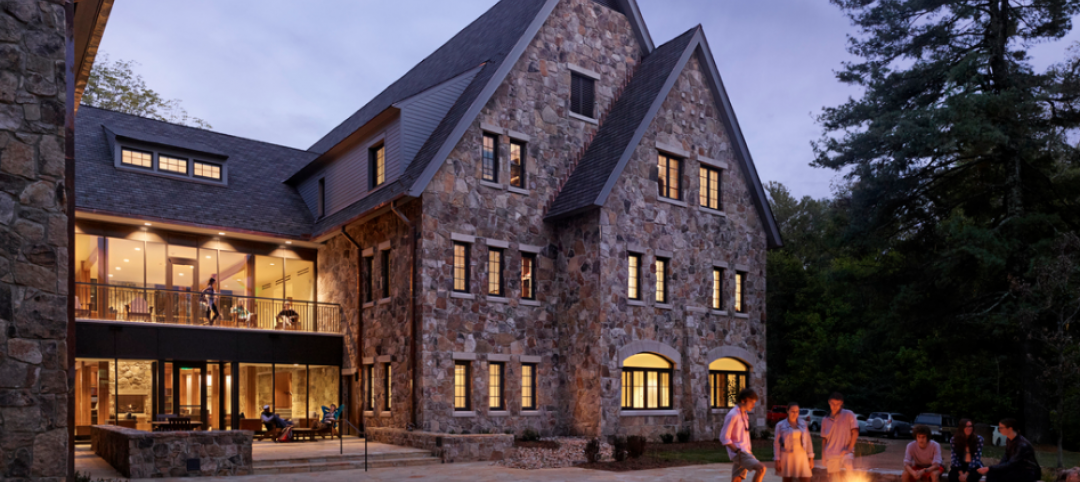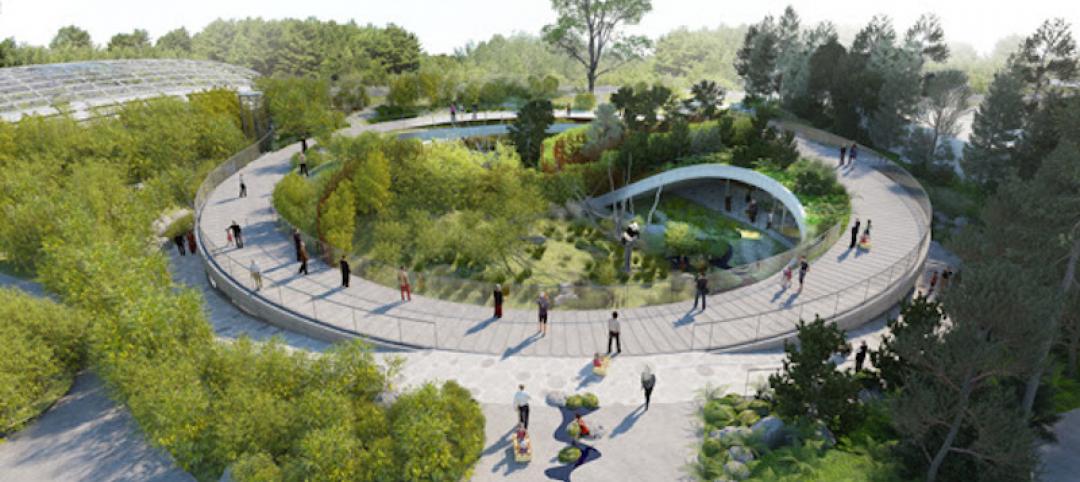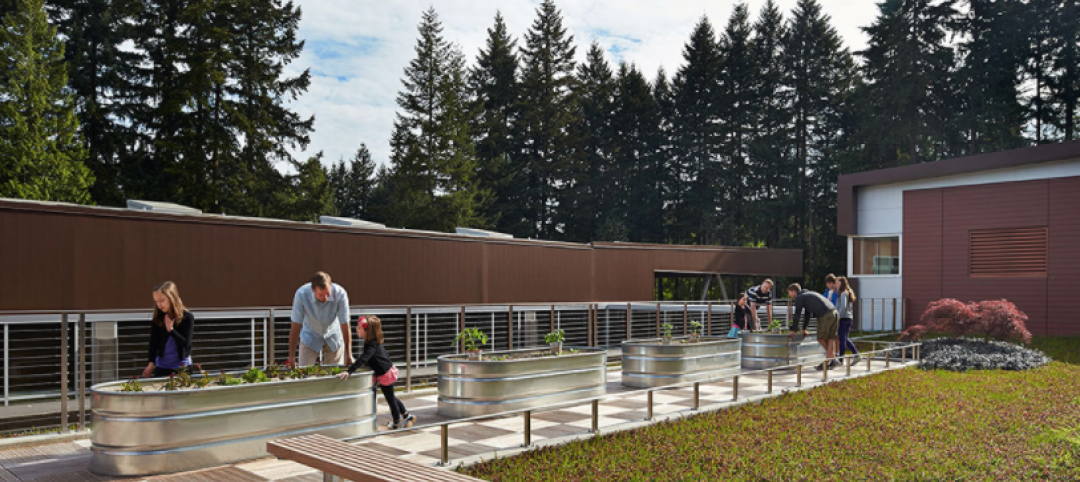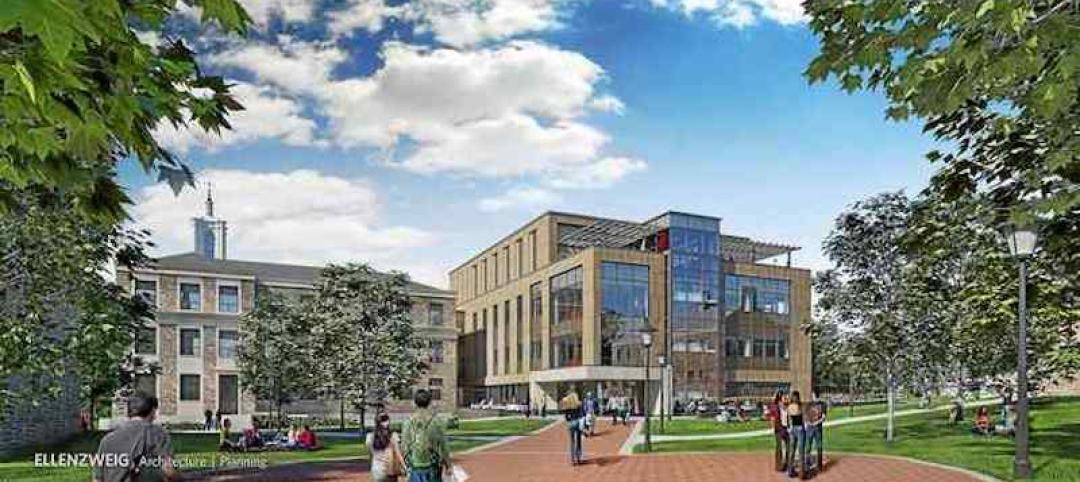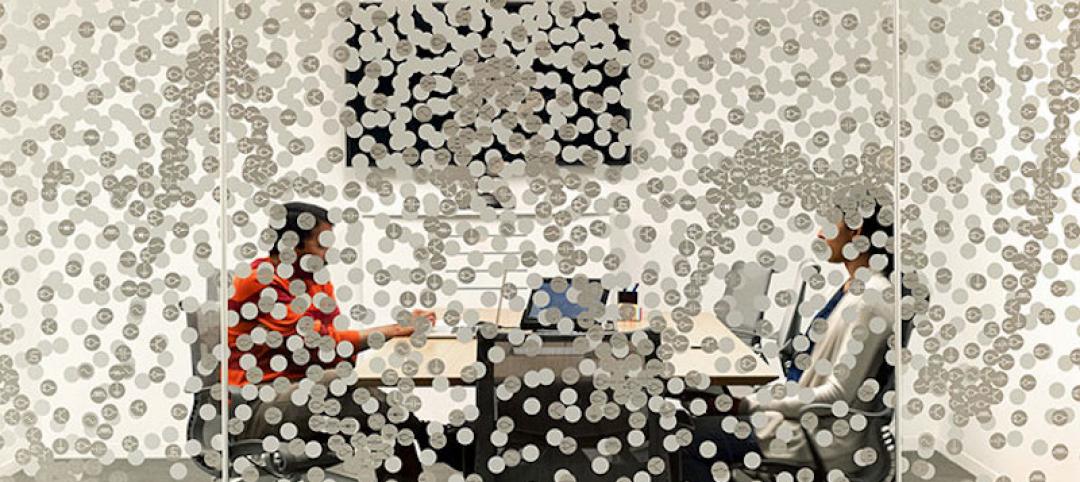Income inequality and gender neutrality are two hot-button issues that are being debated on many fronts, including school districts around the country.
Case in point is Ulysses S. Grant High School, a historic secondary school in the Hollywood district of Northeast Portland, Ore. The 10-acre campus, which serves around 1,800 students, recently underwent a $158 million two-year-long modernization that included a three-story addition and extensive renovation.
Prior to this project, the campus consisted of nine separate buildings that contained five unconnected, windowless basements where one-third of the school’s classes were held and the school’s kitchen and cafeteria were located.
The cafeteria, which offered reduced-price and free lunches, was, in essence, segregating students who usually ate their meals in the basement area from those who could afford to go off-campus for their lunches. “That turned into a haves and have nots situation,” says Erin Storlie, preconstruction manager for Andersen Construction, which was the GC on the renovation and addition project in a joint venture with Colas Construction.
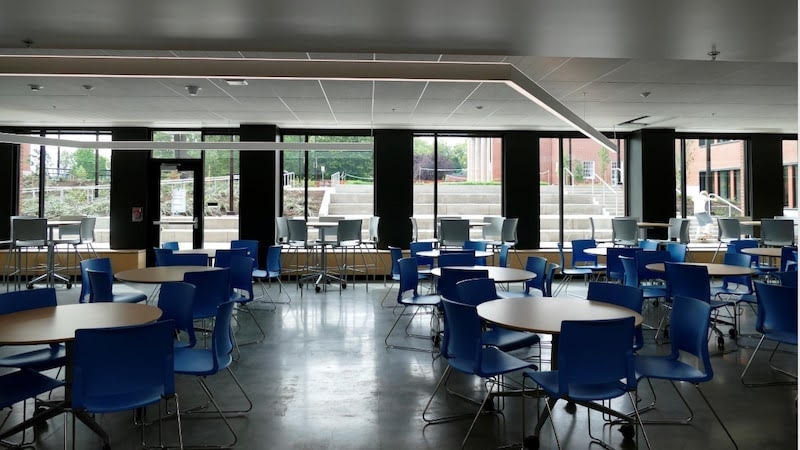
The kitchen and cafeteria were moved to the school's ground floor to encourage greater student interaction during lunch periods. Image: Mahlum Architects
To remove this stigma and to engender dining integration, the Building Team—which included Mahlum Architects as the designer, KPFF Consulting Engineers as the engineer, and CBRE HERRY as program manager—demolished some of the existing buildings to create a two-story commons with plenty of tables and natural light. The main kitchen and cafeteria were moved to the ground level of the renovated building, with new equipment and an outdoor patio that blends into surrounding Grant Park.
“This was long overdue,” says Storlie, whom BD+C interviewed with Andrew Colas and Marc-Daniel Domond, president and executive project manager, respectively, of Colas Construction.
This project stems from a 2012-approved $482 million school construction bond. Grant, the largest high school in Portland, is the third of six high schools scheduled for extensive physical upgrades under this bond. (Its reconstruction cost was $137 million.) Grant’s addition accounts for 40% of the school’s 300,000 sf of total space. The addition connects the basements, and its top floor offers “a modern learning environment,” says Alyssa Leeviraphan, LEED AP, Architect with Mahlum Architects, whom BD+C interview with that firm’s design principal JoAnn Wilcox.
The Grant project is also noteworthy because it introduced gender-neutral bathrooms to one of the district’s schools for the first time.
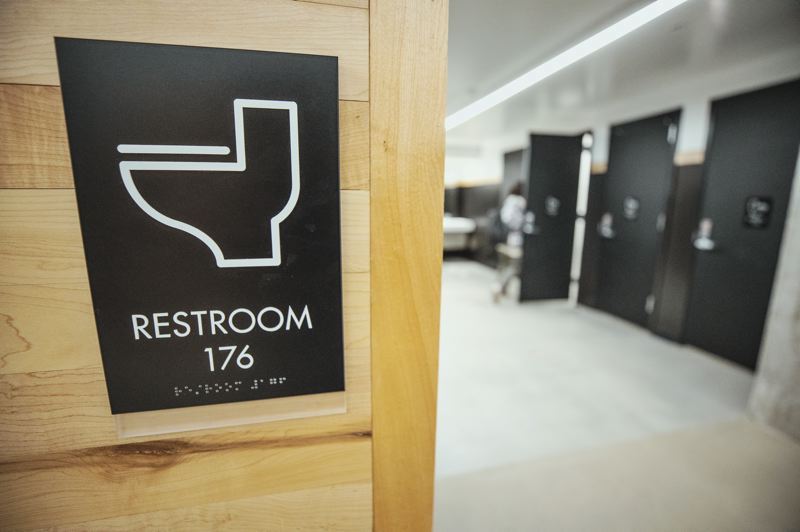
Grant HIgh School's restrooms were remodeled to accommodate gender neutrality and greater student demand for privacy. Image (above) Jonathan House/Portland Tribune, (below) Mahlum Architects
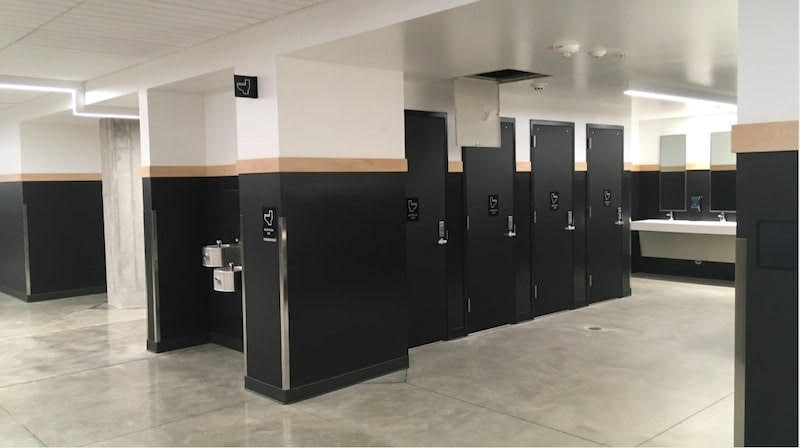
School districts around the country are wrestling with gender neutrality. Districts in Nevada now allow gender-neutral bathrooms. The House of Representatives in Massachusetts in September filed a bill that gives public buildings like schools greater leeway to open gender-neutral bathrooms. The U.S. Supreme Court blocked a challenge to a Pennsylvania school district policy that allows students to use bathrooms and locker rooms that match their gender identifies.
However, this topic can evoke intense, even violent, reactions, as evinced by a Georgia school district’s recent reversal of its decision to allow students to choose bathrooms that best match their gender identifies because of death threats against board members, staff, and students.
There were at least 13 transgender students when Grant High School decided to open its single-user bathrooms, which had been reserved for staff and faculty, to all students who preferred not to use gender-specified facilities.
What happened next surprised everyone: long lines of students queuing up at the single-user restrooms. What had been an accommodation to a relatively small group of students turned into a larger issue about student privacy which, in turn, influenced the school’s redesign.
Guided by input from a central advisory committee comprised of community groups, Mahlum Architects offered an all-user design that places toilets inside a series of small separate rooms with locking solid doors, forming a line of individualized closets. Those rooms open onto the restroom’s main area with a continuous trap sink and wider entryway so teachers walking by can glance inside more easily to see what’s going on in that area.
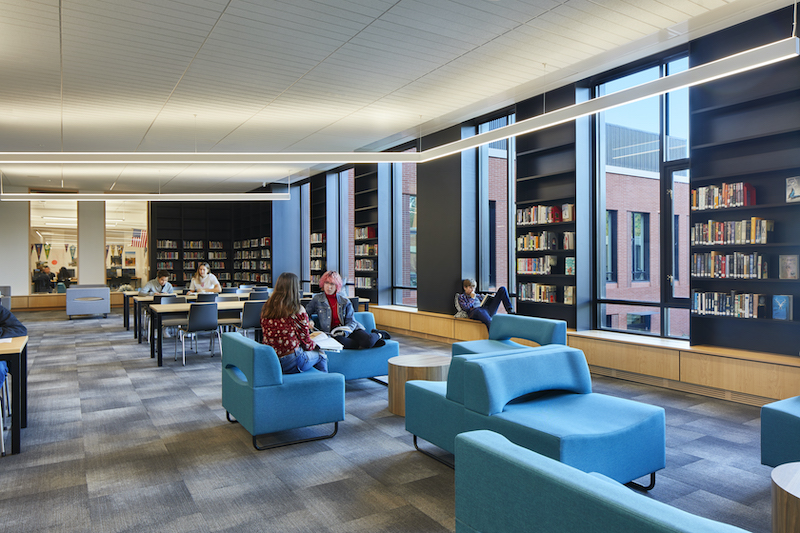
Natural light washes over one of Grant High School's reading areas. Image: Benjamin Benschneider
(Some members of the Building Team point out that the redesigned restrooms are set up to prevent bullying, which at Grant had a tendency to occur near bathroom sinks.)
Grant High School now has 95 water closets, of which 75 are gender neutral. But this solution “has to be driven by the community,” observes Storlie. She notes that another school project her firm is working on, Benson High School in Portland, decided against installing gender-neutral bathrooms. “This is not the new standard yet,” she says.
Related Stories
Higher Education | May 31, 2017
Space utilization in higher education: more than sf per student
There’s more to space utilization than how often a room is occupied. What happens inside an occupied room is just as important.
Education Facilities | May 22, 2017
Educational design taking lessons from tech firms
Recently, in educational design, we have seen a trend toward more flexible learning spaces.
Libraries | May 16, 2017
A New York-area community college adds new zest to its library
Wired seating and group work areas abound.
K-12 Schools | May 1, 2017
Seattle’s first vertically-oriented middle school breaks ground
The building will provide 74,289 sf of space across its five-story classroom bar.
University Buildings | Apr 26, 2017
UMass Amherst is home to America’s first CLT academic building
The building brings the architecture, landscape architecture, and building technology departments under one roof.
Higher Education | Apr 24, 2017
Small colleges face challenges — and opportunities
Moody’s Investor Service forecasts that closure rates for small institutions will triple in the coming years, and mergers will double.
Green | Mar 29, 2017
Copenhagen Zoo and BIG unveil yin yang-shaped panda habitat
The new habitat will sit between two existing buildings, including the Elephant House designed by Norman Foster.
K-12 Schools | Mar 9, 2017
The future of education facilities: Creating spaces where learning happens everywhere
The art of designing schools lies not in just understanding what makes a functional classroom, but in how successful we are in creating a wide array of educational options for teachers and students within the school environment.
School Construction | Feb 26, 2017
A new survey finds education construction activity going strong this year
Surveys of school districts and colleges, though, raise questions about financing for future projects.
Education Facilities | Feb 7, 2017
Let’s get physical: Design possibilities for the digital classroom
As companies are increasingly looking for people who can do things like communicate clearly, solve complex challenges, lead teams, and define strategic direction, a growing number of learners are turning to any resource where they can learn these skills quickly, effectively and in sync with their busy lives, writes Gensler's Meghan Webster.


